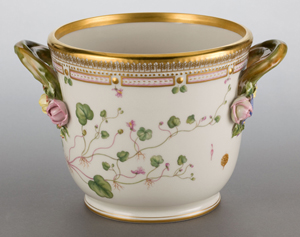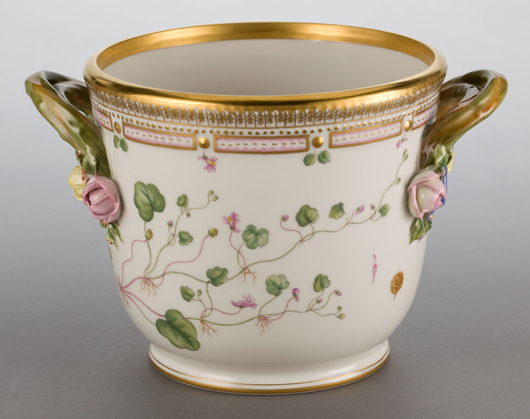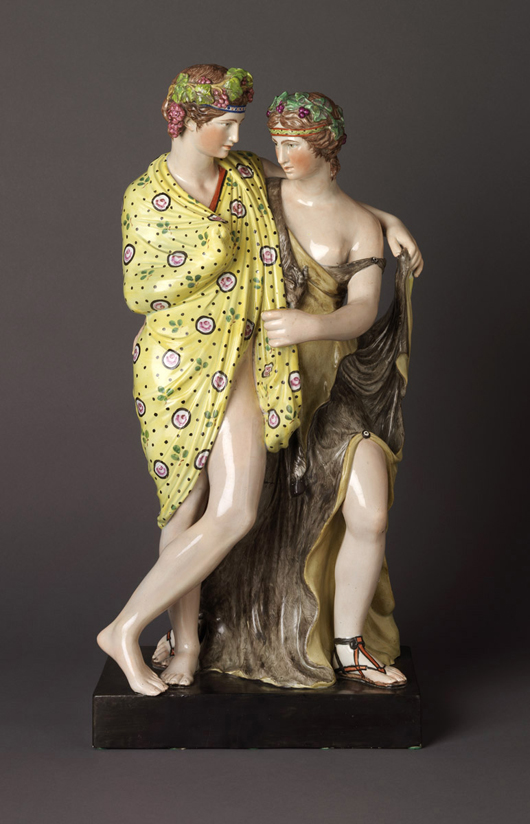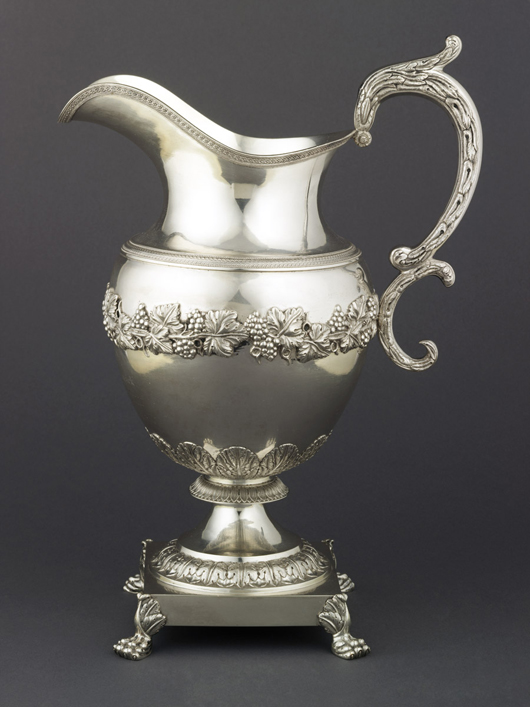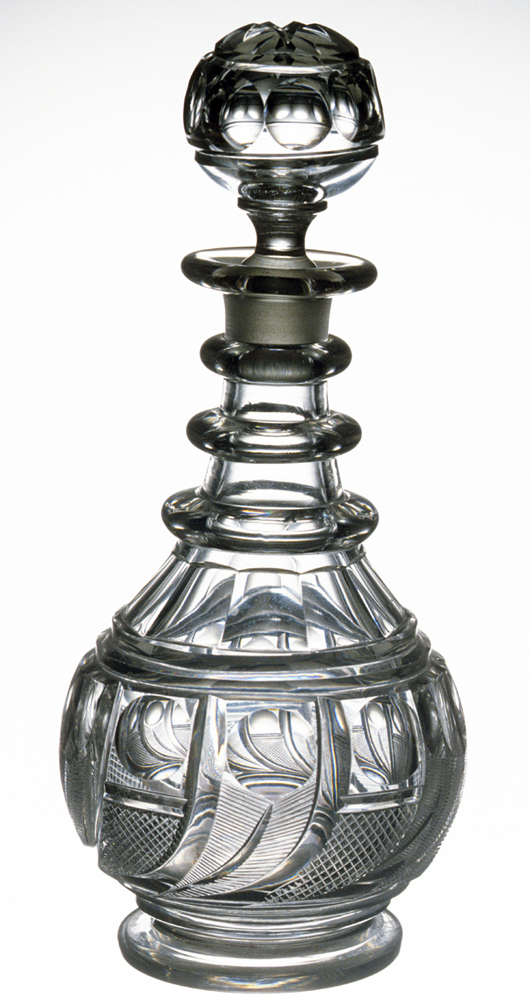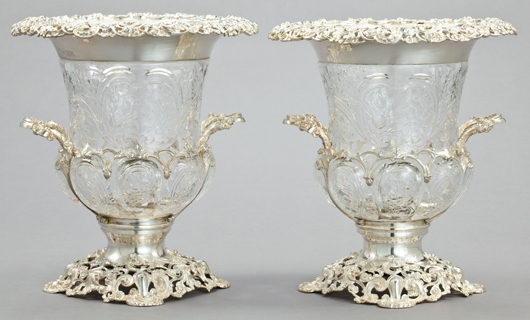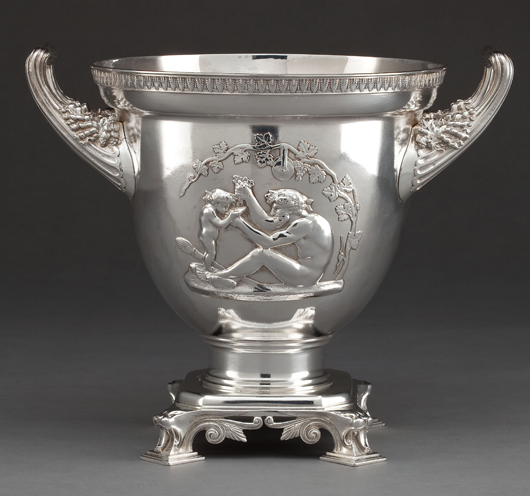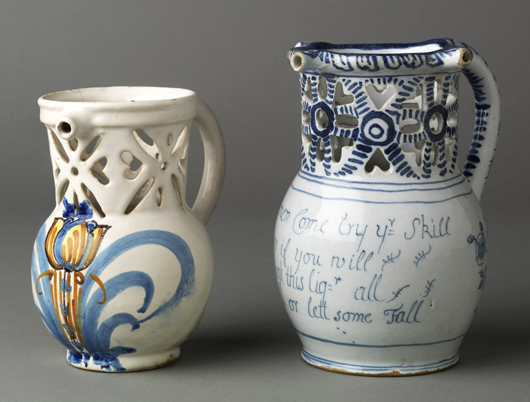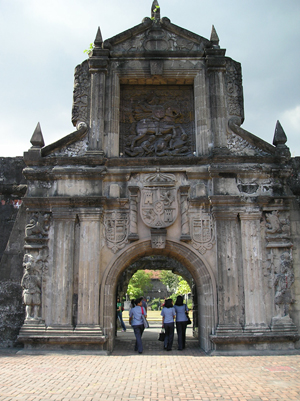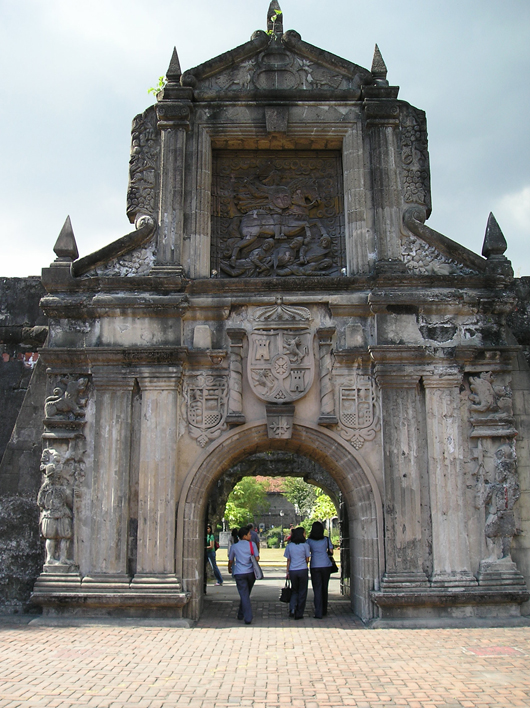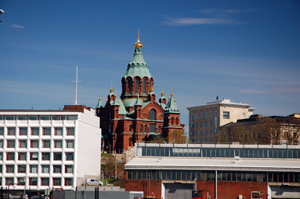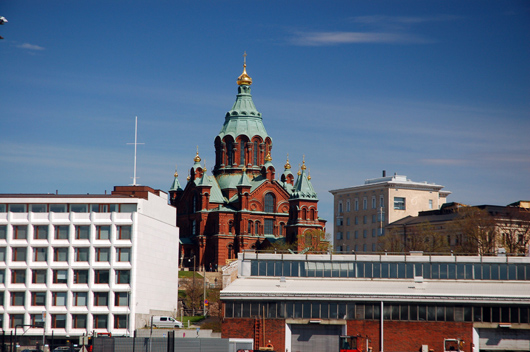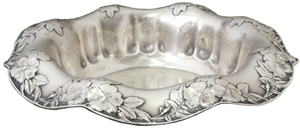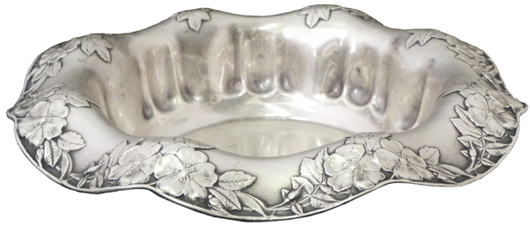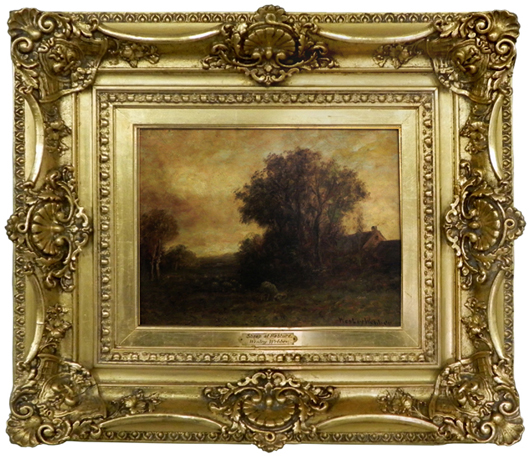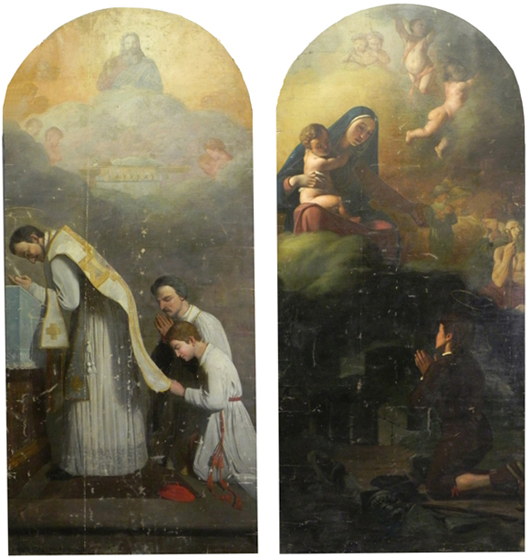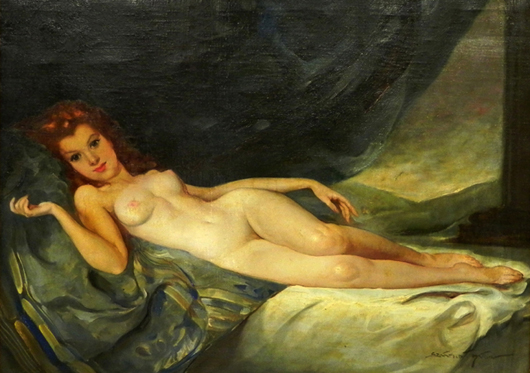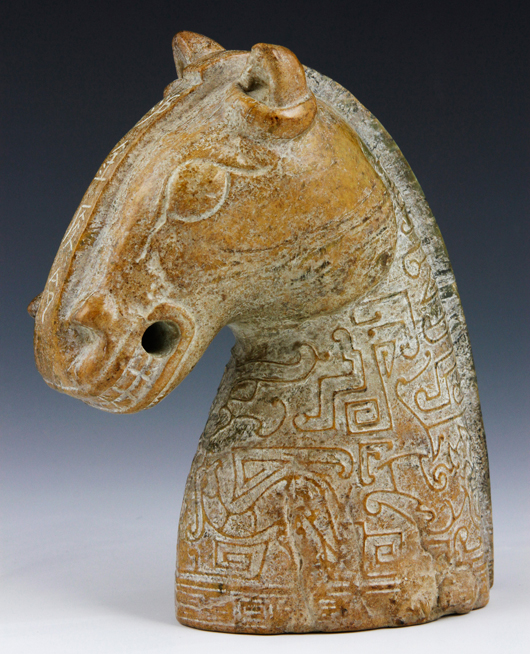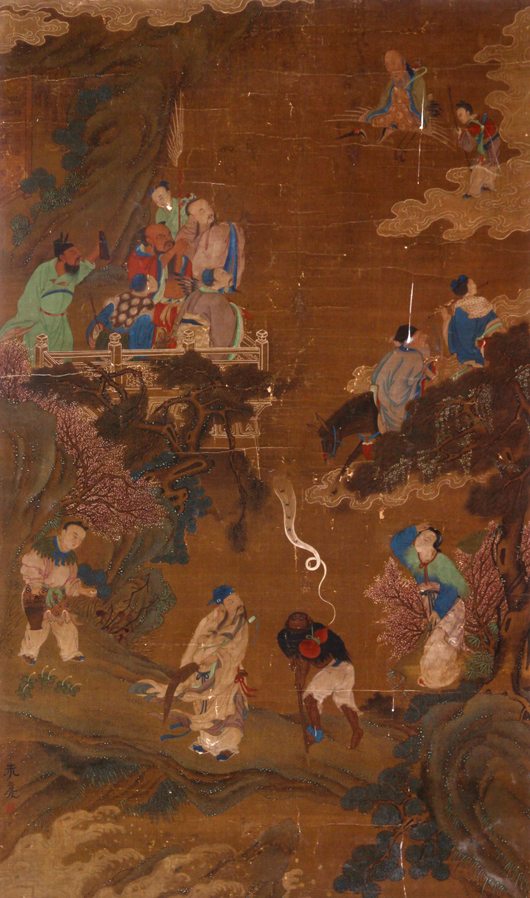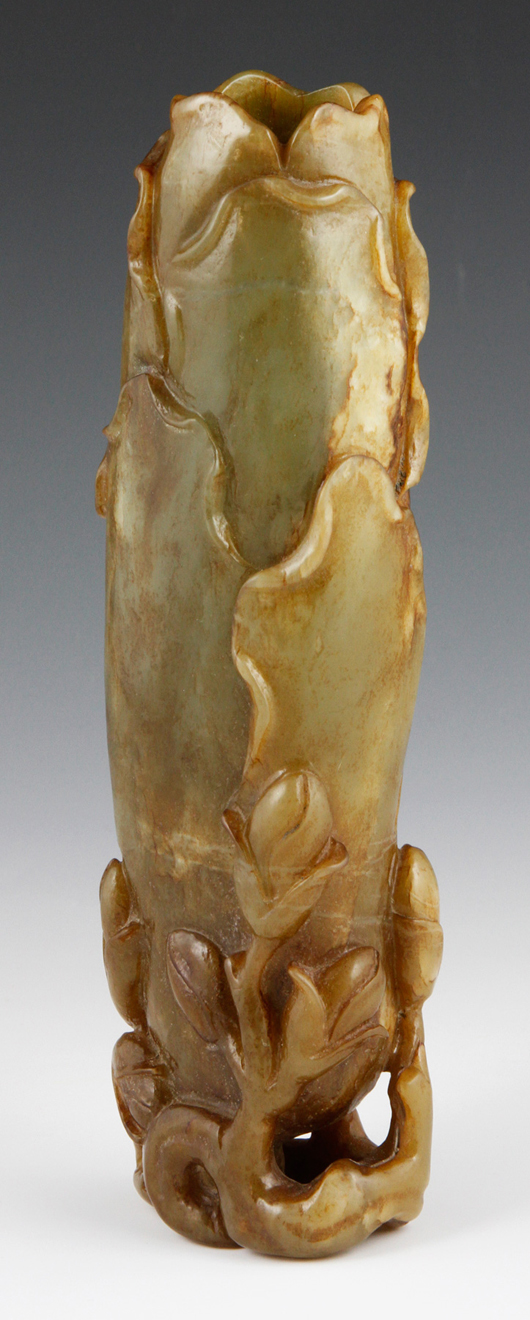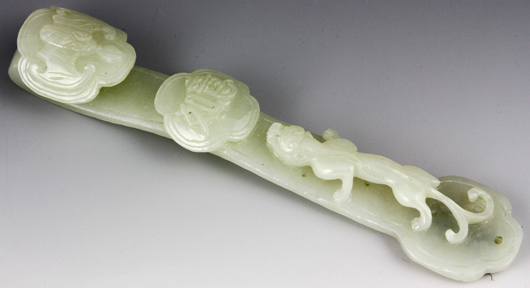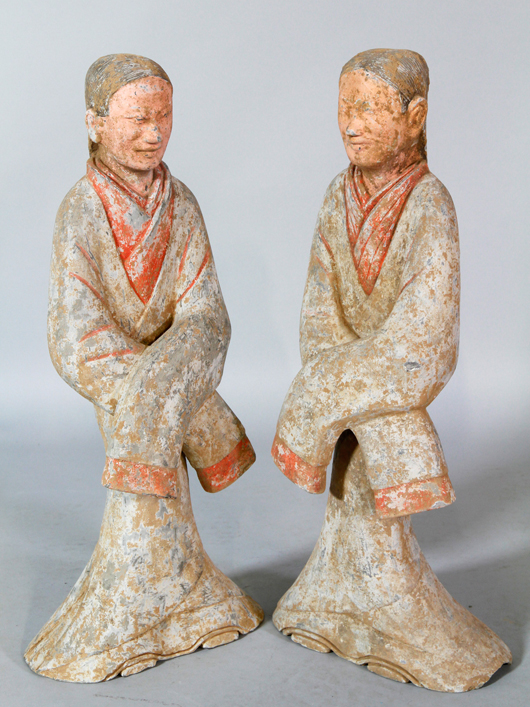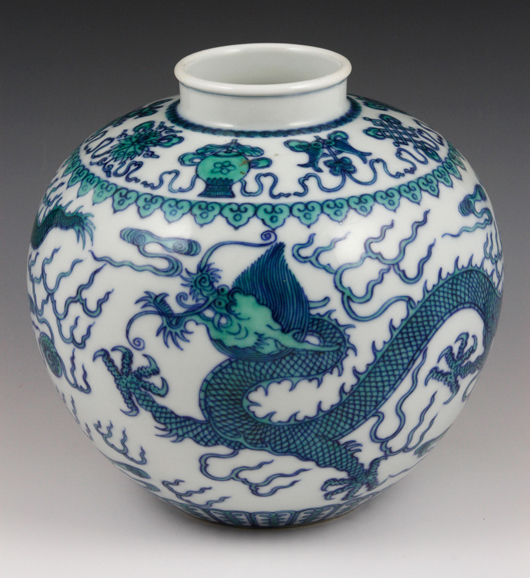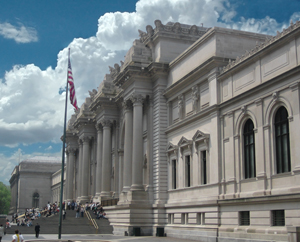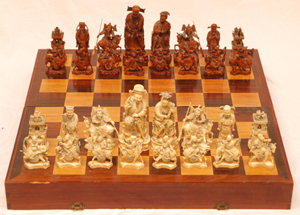
Rare antique Chinese hand-carved ivory chess set, fully relief carved throughout, Qianlong period (est. $7,000-$10,000). Image courtesy of Elite Decorative Arts. BOYNTON BEACH, Fla. – A pair of life-size bronze sculptures by renowned South African artist Dylan Lewis (b. 1954), titled Leopard Crushing Serpent, is the expected top lot at an auction planned for Saturday, May 19, by Elite Decorative Arts, starting at 1 p.m. (EST). The sale will be held in Elite Decorative Arts’ gallery at 1034 Gateway Boulevard in Boynton Beach, with Internet live bidding through LiveAuctioneers.com.
The bronzes carry a pre-sale estimate of $200,000-$250,000, and that may be too modest. The works are rare – one is edition 6/8, the other 7/8 – and they are the only pair available; all the others are in private hands. Their presence at the entrance to an estate or home would make a strong and unique statement. Each figure is 53 inches tall by 71 inches long by 21 inches deep.
Dylan Lewis is considered one of the premier cat sculptors in the world. The work to be sold is pictured in the artist’s limited-edition book titled Forces of Nature, a signed copy of which will be offered as part of the offered lot. In June 2011, Christie’s in London conducted an auction dedicated solely to Lewis’ works titled Predators and Prey II: the Dylan Lewis Bronzes.
Another factor pointing to a fierce bidding war for Leopard Crushing Serpent is the fact that Lewis created the works at the end of the cat sculpting part of his career, before shifting his focus to the human body. Leopard Crushing Serpent portends that shift, as it breaks from the mold of realism (which had been Lewis’ oeuvre) and enters a more abstract and mythical realm.
Along with the Lewis sculpture and other bronzes, the auction will feature a selection of fine antiques, to include original paintings, porcelain, art glass, estate jewelry, silver, ivory, jade, Asian antiques and more.
Another lot that may touch six figures or more is a pair of impressive ivory elephant tusks on stands (est. $75,000-$100,000). One of the tusks is 81 ¾ inches long, the other is 75 inches long (counting the bases). Each one weighs just under 100 lbs.
Three bronzes, in addition to the Lewis work, are expected to attract keen bidder interest. The first is a sculpture by Lynn Chadwick (British, 1914-2003), titled Winged Figures Version I (est. $50,000-$70,000, an estimate that seems quite reasonable, considering the work is appraised at $125,000). It depicts a male and female winged figure, each with a gilded, geometric-shape face.
The second is a bronze sculpture with gold patina by Pierre Arman (French/American, 1928-2005), titled Violin and Trumpet (est. $10,000-$40,000, with an appraised value of $40,000). One of a limited edition of eight, the work has an abstract design that fuses a violin and trumpet. It is signed to the front and numbered, and sits on a black marble base (overall height: 23 ¼ inches).
The third is a large bronze sculpture depicting Joan of Arc entering Orleans with a fan, by the French artist Emmanuel Fremiet (1824-1910). The work, featuring a two-tone gilded design and signed to the bronze base (and mounted on a red marble base) is overall 25 ½ inches tall. It is unique in that Joan of Arc’s head and hand are ivory. It is expected to command $8,000-$10,000.
Headlining the Asian objects category is a rare antique Chinese hand-carved ivory chess set with wooden box (est. $7,000-$10,000). The set, having ivory and tea stained colors in 32 pieces, holds the Qionalong four-character archaic reign mark. The set has emperor and empress pieces for each side, containing mother-of-pearl inlay. All pieces are relief carved throughout.
Also sold will be a pair of large and impressive 18th or 19th century carved ivory emperor and empress figures, with fitted wooden bases (est. $5,000-$7,000). Each piece is an exquisitely carved figure seated on a throne, in relief carved royal robes. Each surmounts an ivory base with fence and 3-panel reticulated screen, with calligraphy dating the pieces to the Qianlong period.
Returning to artwork, an original hand-signed aquatint and carborundum etching by the renowned Spanish artist Joan Miro (1893-1983), titled Sala Gaspar Barcelona, carries a pre-sale estimate of $6,000-$8,000. The etching, hand-signed lower right, measures 41 inches by 26 inches, plus a mat and frame. It also comes with a certificate of authenticity and an appraisal.
Rounding out just some of the day’s top lots is an oil on canvas painting by French artist Jules Ribard, depicting an Arabian cityscape scene with Bedouin figures, signed, 18 inches by 30 inches (est. $4,000-$6,000); and a lovely ladies’ Chinese 22K yellow gold necklace, 32 ½ inches long, with hoop link wreaths and malachite links connecting each ring (est. $12,000-$16,000).
For additional information on any item in the sale, call 561-200-0893 or e-mail info@eliteauction.com.
View the fully illustrated catalog and sign up to bid absentee or live via the Internet at www.LiveAuctioneers.com.
# # #
ADDITIONAL LOTS OF NOTE
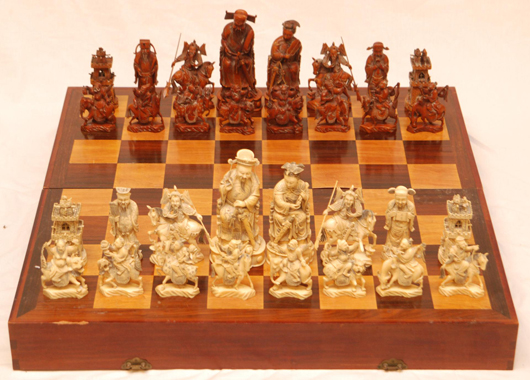
Rare antique Chinese hand-carved ivory chess set, fully relief carved throughout, Qianlong period (est. $7,000-$10,000). Image courtesy of Elite Decorative Arts. 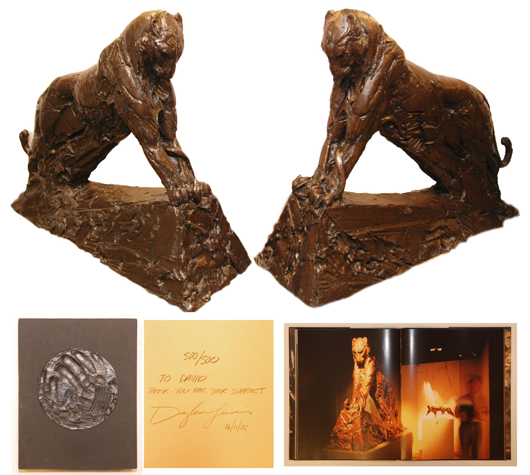
Life-size bronze sculptures by South African artist Dylan Lewis titled ‘Leopard Crushing Serpent’ (est. $200,000-$250,000). Image courtesy of Elite Decorative Arts. 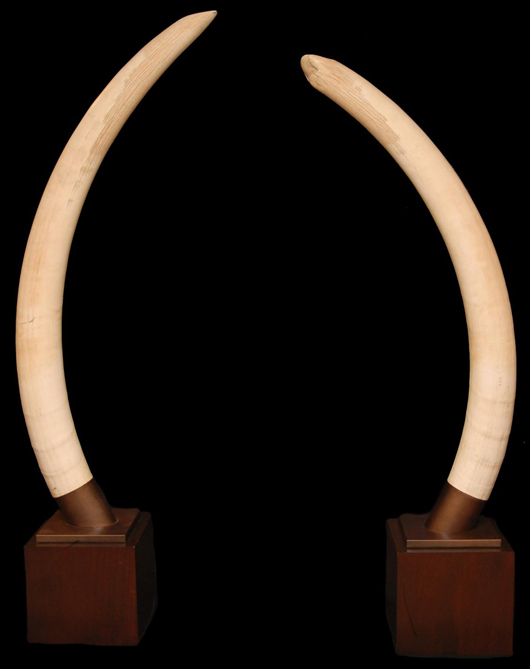
Pair of impressive and large elephant ivory tusks on stands, each weighing just under 100 lbs. (est. $75,000-$100,000). Image courtesy of Elite Decorative Arts. 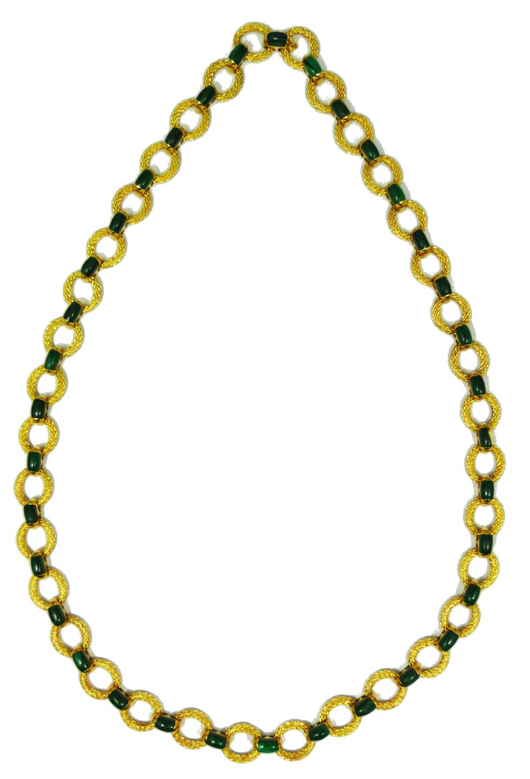
Stunning 22kt yellow gold necklace with malachite links connecting each ring (est. $12,000-$16,000). Image courtesy of Elite Decorative Arts. 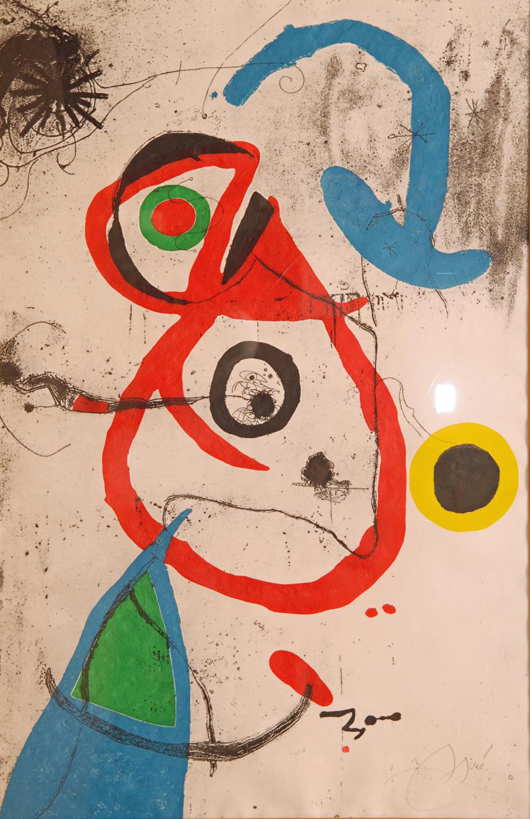
Original hand-signed aquatint and carborundum etching by Joan Miro, titled ‘Sala Gaspar Barcelona’ (est. $6,000-$8,000). Image courtesy of Elite Decorative Arts. 
Bronze sculpture by Lynn Chadwick (British, 1914-2003), titled ‘Winged Figures Version I’ (est. $50,000-$70,000). Image courtesy of Elite Decorative Arts.


